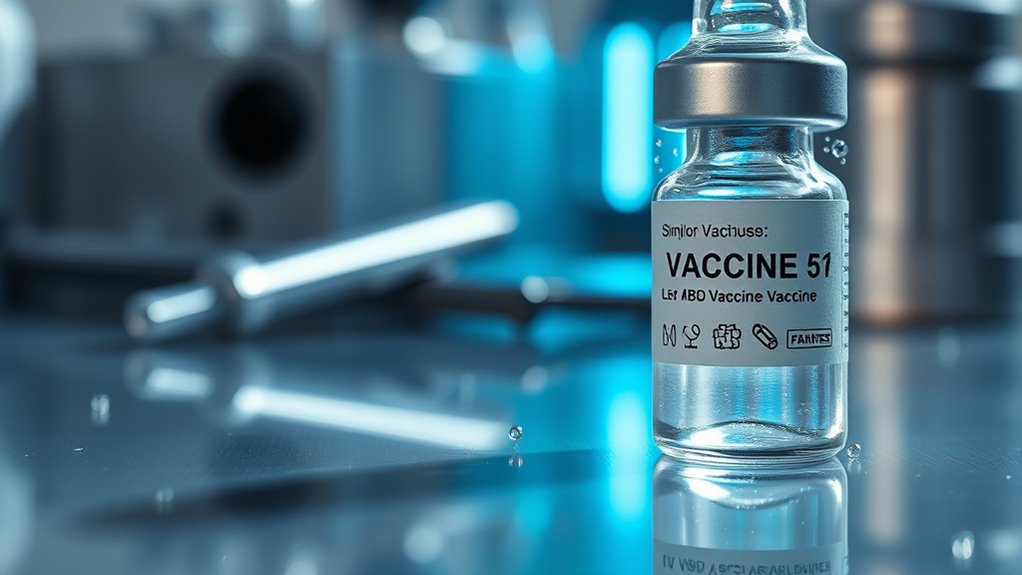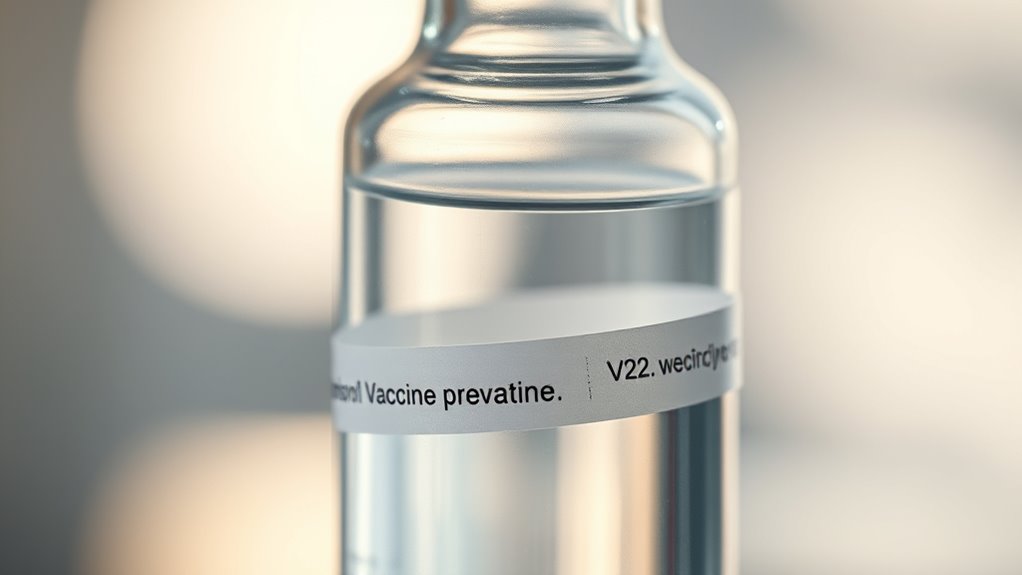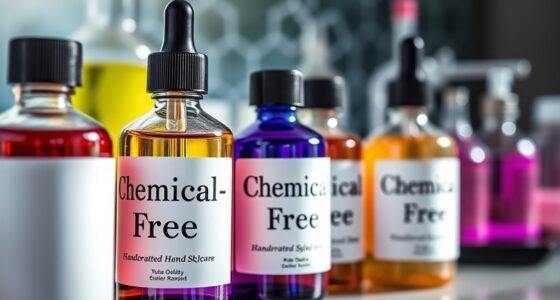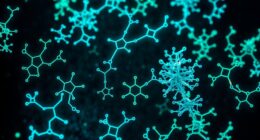Vaccines do contain tiny amounts of formaldehyde, but it’s not toxic and is naturally present in your body and many foods. During vaccine production, formaldehyde helps inactivate viruses and bacteria, and the residual amounts are extremely low—much safer than what you naturally encounter daily. These trace levels are carefully studied and considered safe by health authorities. If you’re curious about how these small amounts work, there’s more to discover below.
Key Takeaways
- Vaccines contain only tiny, trace amounts of formaldehyde, far below levels considered toxic or harmful.
- Formaldehyde in vaccines is used to inactivate pathogens and is thoroughly removed or neutralized before use.
- The formaldehyde present in vaccines is similar to natural levels produced by the body and found in foods.
- Regulatory agencies evaluate and set safe limits for formaldehyde in vaccines based on extensive scientific research.
- The small quantities of formaldehyde in vaccines are proven safe and essential for vaccine stability and effectiveness.

Many vaccines contain small amounts of formaldehyde, a chemical naturally present in the human body and used during manufacturing to inactivate viruses and bacteria. This ingredient is a common component in vaccine formulations, but its presence often raises concerns about safety.
Many vaccines contain tiny amounts of formaldehyde, a natural and safe component used during manufacturing.
When you look at vaccine ingredients, formaldehyde is listed because it plays a critical role in guaranteeing the vaccine’s stability and effectiveness. It’s used in very tiny quantities—far below levels that would cause harm—making it a trace preservative rather than an active toxin. The use of natural materials in vaccine production emphasizes their safety profile and compatibility with the human body.
Understanding formaldehyde safety is key to addressing vaccine concerns. The amount present in vaccines is minuscule—typically measured in parts per billion—and is considered safe by regulatory agencies worldwide, including the CDC and WHO.
Your body naturally produces formaldehyde during metabolic processes, such as breaking down amino acids, and it’s also found in various foods like fruits and vegetables. This means the small amount introduced via vaccines doesn’t considerably increase your overall formaldehyde levels or pose a health risk.
Vaccine ingredients are carefully evaluated for safety before they reach you. During the development process, scientists assess how much formaldehyde remains after manufacturing and ensure it’s well within safety limits established through extensive research.
These limits are set with a large margin of safety, so even if you were exposed to higher levels temporarily, it wouldn’t be harmful. The trace amounts of formaldehyde in vaccines are comparable to what you encounter daily from natural sources, making concerns about toxicity largely unfounded.
Furthermore, formaldehyde’s role in vaccines isn’t to cause harm but to ensure the vaccine’s safety and efficacy. It inactivates viruses or bacteria so they can’t cause disease, and then it’s removed or neutralized in the final product.
The residual levels remaining are so low that they don’t pose a risk to your health. The safety profile of vaccines is supported by decades of research and monitoring, confirming that the tiny quantities of formaldehyde involved are safe and necessary.
Frequently Asked Questions
Are There Any Long-Term Health Risks From Formaldehyde in Vaccines?
You might wonder about long-term safety and formaldehyde accumulation in vaccines. Current evidence shows that the tiny amounts of formaldehyde used are safe and don’t build up in your body over time.
Your immune system processes these trace preservatives efficiently, so long-term health risks are minimal. Regulatory agencies thoroughly review vaccine ingredients, ensuring they remain safe, so you don’t need to worry about formaldehyde causing long-term health problems.
How Much Formaldehyde Is in Vaccines Compared to Everyday Products?
You might wonder about formaldehyde levels in vaccines compared to everyday products. Vaccines contain tiny, safe amounts of formaldehyde, far less than what’s found in common foods and household items.
This minimal level guarantees vaccine safety while preventing contamination. Rest assured, the formaldehyde in vaccines is well within safety limits, and health authorities continuously monitor these levels to protect your health and safety.
Can Formaldehyde Exposure From Vaccines Cause Allergic Reactions?
You’re wondering if formaldehyde exposure from vaccines can cause allergic reactions. While formaldehyde allergies are rare, some people might experience vaccine reactions due to sensitivity.
The tiny amounts in vaccines are unlikely to trigger allergies in most individuals. If you have a known formaldehyde allergy, consult your doctor before vaccination.
Are Certain Populations More Sensitive to Formaldehyde in Vaccines?
You might wonder if certain populations are more sensitive to formaldehyde in vaccines. Research shows that vulnerable populations, such as those with genetic sensitivity or compromised immune systems, could react more strongly.
About 1 in 100,000 children experience severe reactions, indicating some groups may be at increased risk. While vaccines are generally safe, understanding individual differences helps make certain that protection for everyone, especially those with specific vulnerabilities.
How Do Vaccine Manufacturers Ensure Formaldehyde Levels Stay Within Safe Limits?
You might wonder how vaccine manufacturers keep formaldehyde levels safe. They follow strict manufacturing standards and safety protocols to monitor and control formaldehyde concentrations carefully.
These protocols include precise measurements and quality checks during production to ensure levels remain well below harmful thresholds. By adhering to these rigorous guidelines, manufacturers safeguard everyone’s health, making sure vaccines are both effective and safe for all populations.
Conclusion
So, when you hear that vaccines contain “toxic” formaldehyde, remember this: the tiny traces are so minuscule they’re practically invisible, like a drop in an ocean of safety. Your body is designed to handle it effortlessly, and scientists have tested and double-checked time and again. Don’t let fear blow things out of proportion—these traces are nothing more than tiny, harmless whispers compared to the huge health benefits vaccines provide.









